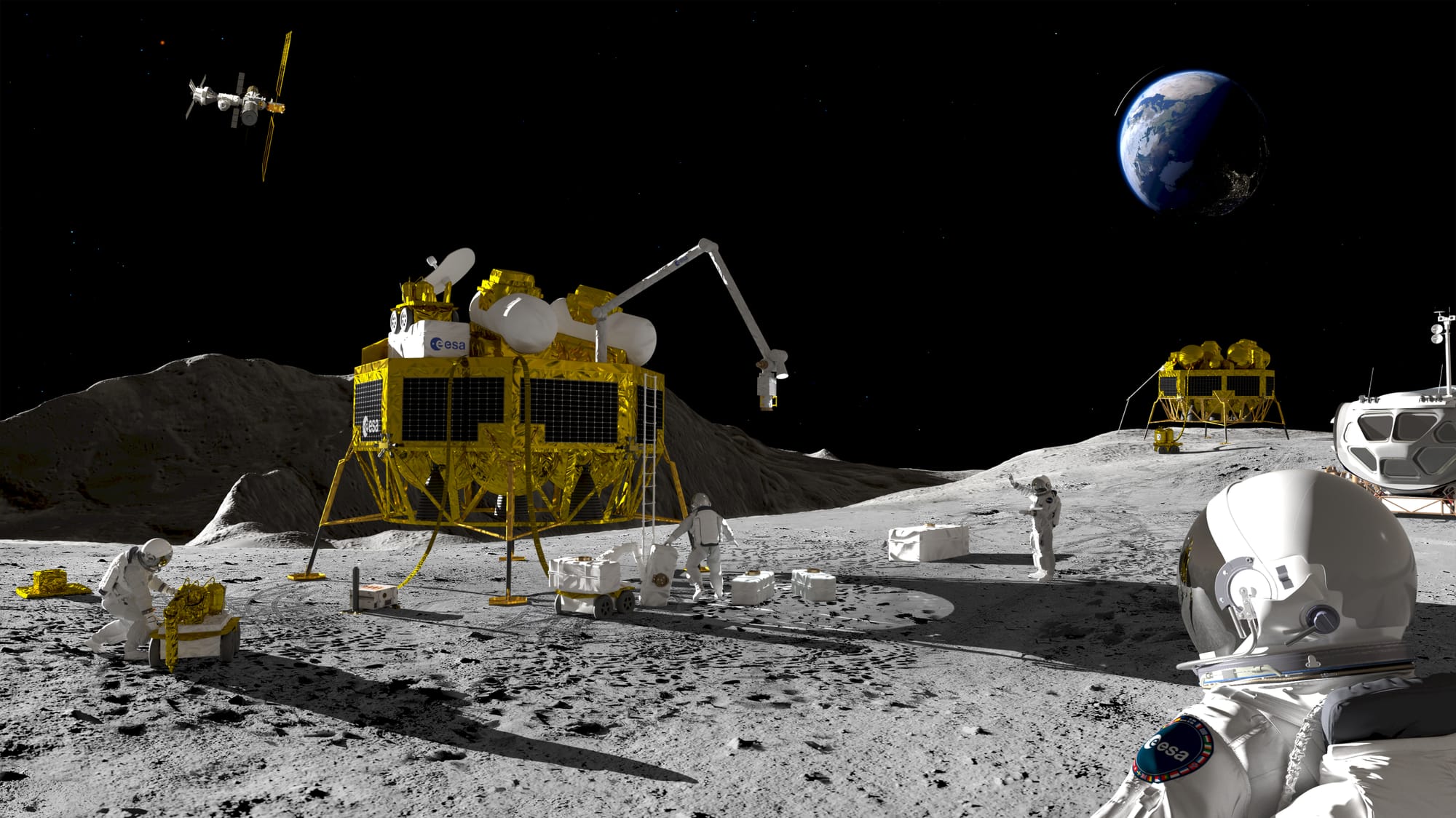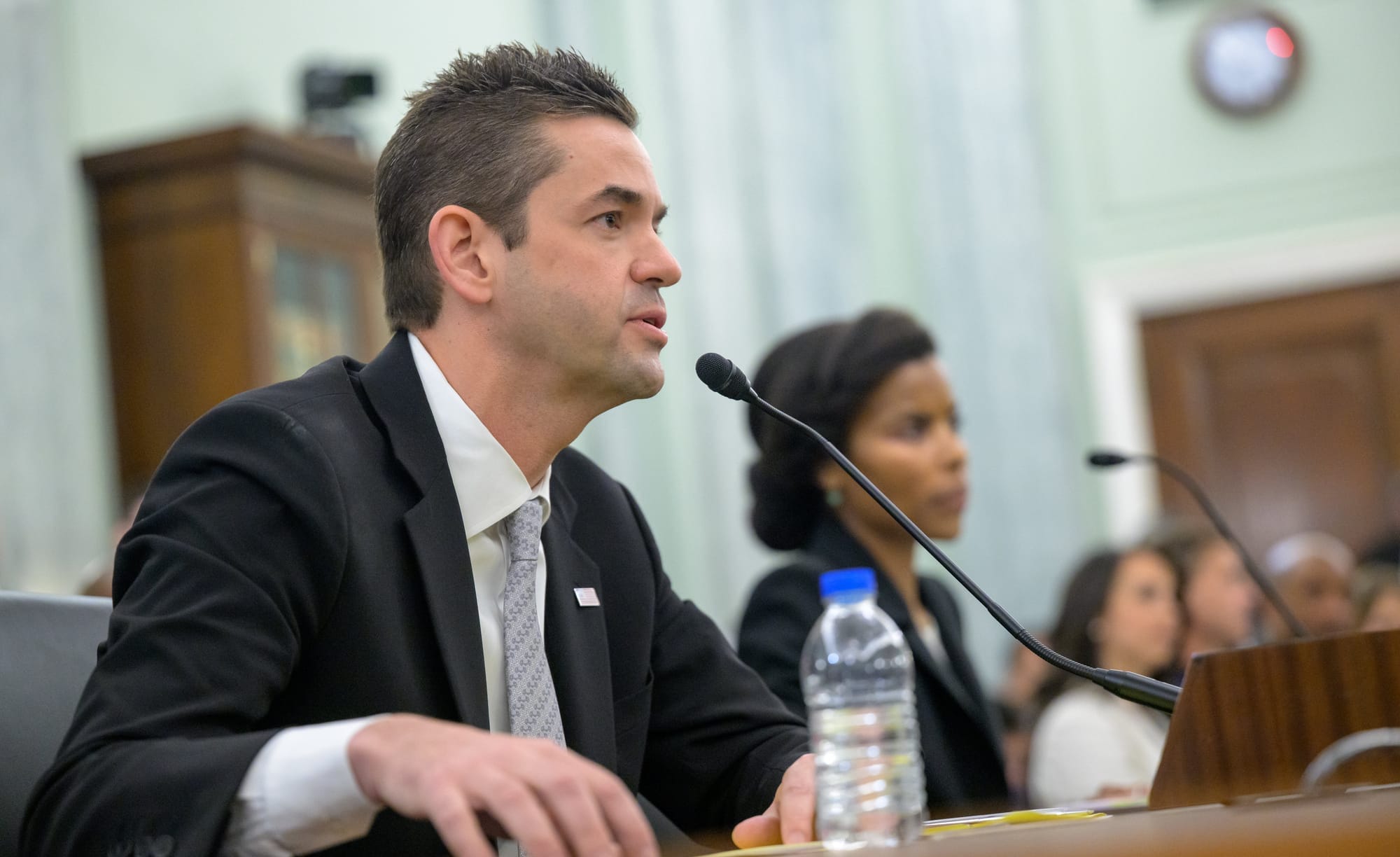Table of Contents
Recently, the European Space Agency (ESA) released its 'Strategy 2040' document, outlining key goals in five major areas that the agency will pursue over the next fifteen years. The document is a follow-up to 'Agenda 2025', released March 2021.
ESA and its Director General, Josef Aschbacher, hope that 'Strategy 2040' will be ‘a living document’ to that continues to adapt to the needs of the space agency. 'Strategy 2040' is also intended to inform decisions made a Ministerial meetings, where each member state votes on programs and a budget. Speaking on Strategy 2040, Josef Aschbacher stated:
"Strategy 2040 is a high-level strategy, it's a vision that we have elaborated with our member states. We have a very robust, a very strong space industry today. Some of the best companies actually worldwide. And this is the good news. The times are very turbulent, but every challenge is an opportunity. I'm working very hard with [the] member states, with [our] colleagues to make sure that we get a very strong ESA Ministerial, because this is a precondition in order for industry to really develop enormously ambitious, exciting programmes in the next year or even decades to come."
"That means to build up its strength, also in space, not only in defense or security or in the political context, but really also in space. [This] is really an opportunity to make sure that Europe is providing the answers to its member states and international partners in order to have a strong space capability."
The five target areas for 'Strategy 2040' are planetary protection, exploration, autonomy, competitiveness, and inspiration. For each goal, ESA has outlined necessary strategic actions.
Regarding planetary protection, ESA is focused on challenges from both Earth itself and the rest of the solar system. Climate change is one of those Earth-based challenges with the agency seeking to utilize cutting-edge Earth observation satellites to assist in the identification of imminent environmental disasters. Off of Earth, the agency is retaining its commitment to a 'zero space debris framework' alongside establishing a space weather service to monitor solar activity and track near-Earth asteroids.
For exploration in a post-International Space Station world, ESA is aiming to continue collaboration with major space agencies while deploying infrastructure for regular lunar operations, both robotic and crewed, to lay the foundations for Mars missions. Other major missions across the solar system are also planned, to search for life within the solar system and to understand nearby galaxies.
Concerning autonomy, ESA is seeking performant, sustainable, and affordable launch solutions to ensure Europe retains independent access to space, via commercial reusable rockets. Independent access to space will assist in the deployment of European-owned space infrastructure to improve life back on Earth.
To ensure competitiveness, ESA hopes Europe will utilize affordable European launch solutions and space infrastructure to drive new innovations and economic growth, keeping its member states competitive internationally in space and by harnessing it. Existing terrestrial research facilities are planned to be leveraged too to provide Europe with a steady flow of needed talent and breakthrough technologies.
And for inspiration, ESA is looking to reinforce its diversity and inclusion initiatives to ensure Europe's various minorities and communities are represented. Partnerships with European Union nations are desired too to guarantee the agency's initiatives align with national policies.
An expansive and thorough list of strategic actions and policy suggestions can be found here. ESA expects these actions to change over time as progress is made.
Additionally, the full goals for 'Strategy 2040' are as follows:
- Protect our planet and climate
- Develop the technologies, missions, applications and services that will enable progress in acting to address climate change, degradation of the environment, and pressure on natural resources. By 2040, ESA will support Europe through space-based systems and digital twins of our planet to foster scientific understanding of the processes of Earth’s natural systems.
- Spearhead a greener, circular economy in space with global standards for sustainability and a zero-debris environment. ESA will pursue a zero debris future by 2030 via stringent targets of collision probabilities for spacecraft below 1 in 1000 and maintaining a 99% or greater likelihood of successful disposal, and a fully sustainable use of space with the establishment of a circular space economy by 2040.
- Position Europe as a global leader in space safety by expanding capabilities in space weather services and planetary defence. The impact of extraterrestrial events should not be underestimated–a moderate solar event could cost Europe 15 billion Euros or more. ESA aims to play a key role at global level in space weather and planetary defence from solar storms and Near-Earth Objects.
- Explore and discover
- Elevate ESA’s global leadership in Earth and space science to unravel the mysteries of our planet and the Universe. Science has shaped European identity for centuries, fostering reason, empirical evidence, and progress – a legacy that continues today as we continue to seek answers to the most fundamental questions of our time. The agency will continue developing world-class missions characterised by scientific excellence, enormous discovery potential, and tremendous technological innovation, along with deep public engagement.
- Expand ESA’s unique capabilities and roles in the new space exploration era in low Earth orbit, around and on the Moon, and towards Mars. As we enter a new epoch of space exploration, ESA must build on its pioneering accomplishments and unique strengths to remain a key partner in exploration, securing a foothold on nearby destinations to enable the next leaps in the exploration of our Solar System.
- Strengthen European autonomy and resilience
- Secure autonomous and competitive access to and mobility in space through new transportation systems, solutions and services. ESA will boost Europe’s space access and mobility by 2040, making it a key player in space transportation. Recognising that launch costs dictate competitiveness in space, the agency will reduce reliance on non-European entities and strengthen its own capabilities.
- Develop the next generation technologies and systems in connectivity, Positioning, Navigation & Timing and Earth Observation for a more connected and safer future for citizens. By 2040, ESA will contribute to strengthening Europe’s connectivity, navigation and remote sensing capabilities by developing and enhancing resilience and robustness of these systems and exploiting the potential of the quantum revolution in the coming generations of systems.
- Develop state-of-the-art space solutions for the prediction and management of natural and anthropogenic disasters and emergencies. Natural and human-made threats are becoming bigger and more complex. Europe must continue expanding its crisis response capabilities by improving infrastructure and creating services, building on its current strengths while addressing critical gaps in these domains.
- Boost European growth and competitiveness
- Accelerate innovation by spearheading the development of cutting-edge competitive European space technologies in key strategic domains. As part of ESA’s 2040 Technology Vision, European space technology capabilities and leadership will be further advanced by ESA investing in cutting-edge innovations that serve transversal purposes, foster a thriving space industry, and in tandem facilitate broader strategic aims.
- Strengthen industrial capacity and competitiveness to unlock new markets and drive economic growth, fostering a more prosperous society. Building these new technologies in a competitive and innovative space sector requires strong European industrial capacity. ESA will enable the cost-effective, efficient and scalable production of space technologies that create new commercial avenues and seed new markets for the broader benefit of Europe and society at large.
- Position Europe as a commercial hub in the booming global space economy, able to attract significant private investment. By 2040, Europe should become a leading commercial hub for the global space economy. ESA will enable this via private investment, strategic partnerships (including public-private), and leveraging Europe’s strong industrial pedigree and talent, both inside and outside of the space industry.
- Establish Europe as a space research hub, by leveraging world-class technical facilities, and by investing in and attracting top STEM talent. ESA believes it is vital that Europe becomes a global epicentre for space research by harnessing its elite technical facilities and supporting its top STEM talent – thus maintaining its position as one of the leaders in space more broadly.
- Inspire Europe
- Reinforce the European space ecosystem through world-class project management and intensified co-operation among key stakeholders. The importance of inspiring the next generation is obvious. It requires a more united European space ecosystem, where Member States, the European Union and key stakeholders closely collaborate to foster excitement.
- Position ESA as a model for leveraging space activities inclusively to inspire young people and future generations from diverse backgrounds. Meeting today's challenges is only one aspect of securing Europe's leadership – we must also pass our knowledge and excitement to future generations through fostering fascination, encouraging exploration and ensuring equal access to all.
- Enable ESA Member States and the EU to harness space capabilities for greater influence in international diplomacy and global affairs. Space for diplomacy (capabilities supporting informed policy and decision-making) and diplomacy for space (enhancing strategic partnerships with stakeholders) can strengthen Europe’s global leadership.






